Prediction of Crack Propagation of Nano-Crystalline Coating Material Prepared from (SAM2X5): Experimentally and Numerically
Abstract
:1. Introduction
2. Experimental Work
2.1. Coating’s Fabrication and Characterization
2.2. Microstructure Characterization
3. Results and Discussion
3.1. Microstructural Characterization
3.2. Crack Growth Criteria
3.3. Calculating Stress Intensity Factors
3.4. Three Points Bend Geometry
3.5. Elastic Tangential Stress around the Crack Tip
4. Conclusions
Author Contributions
Funding
Data Availability Statement
Conflicts of Interest
References
- Inoue, A.; Kong, F.L.; Man, Q.K.; Shen, B.L.; Li, R.W.; Al-Marzouki, F. Development and applications of Fe-and Co-based bulk glassy alloys and their prospects. J. Alloys Compd. 2014, 615, S2–S8. [Google Scholar] [CrossRef]
- Wang, W.H. The elastic properties, elastic models and elastic perspectives of metallic glasses. Prog. Mater. Sci. 2012, 57, 487–656. [Google Scholar] [CrossRef]
- Trexler, M.M.; Thadhani, N.N. Mechanical properties of bulk metallic glasses. Prog. Mater. Sci. 2010, 55, 759–839. [Google Scholar] [CrossRef]
- Inoue, A.; Kong, F.L.; Zhu, S.L.; Shalaan, E.; Al-Marzouki, F.M. Production methods and properties of engineering glassy alloys and composites. Intermet 2015, 58, 20–30. [Google Scholar] [CrossRef]
- Joshi, S.S.; Katakam, S.; Singh Arora, H.; Mukherjee, S.; Dahotre, N.B. Amorphous coatings and surfaces on structural materials. Crit. Rev. Solid State Mater. Sci. 2016, 41, 1–46. [Google Scholar] [CrossRef]
- Blink, J.; Farmer, J.; Choi, J.; Saw, C. Applications in the nuclear industry for thermal spray amorphous metal and ceramic coatings. Metall. Mater. Trans. A 2009, 40, 1344–1354. [Google Scholar] [CrossRef] [Green Version]
- Luding, R.; Thorpe, R. Electric arc spray coatings increase cost and reliability of power generation systems. Adv. Mater. Process. 2013, 171, 46–48. [Google Scholar]
- Cheng, J.B.; Liang, X.B.; Chen, Y.X.; Wang, Z.H.; Xu, B.S. High-temperature erosion resistance of FeBSiNb amorphous coatings deposited by arc spraying for boiler applications. J. Therm. Spray Technol. 2013, 22, 820–827. [Google Scholar] [CrossRef]
- Xu, P.; Zhang, C.; Wang, W.; Liu, L. Pitting mechanism in a stainless steel-reinforced Fe-based amorphous coating. Electrochim. Acta 2016, 206, 61–69. [Google Scholar] [CrossRef]
- Kozieł, T.; Zielińska-Lipiec, A.; Latuch, J.; Kąc, S. Microstructure and properties of the in situ formed amorphous-crystalline composites in the Fe–Cu-based immiscible alloys. J. Alloys Compd. 2011, 509, 4891–4895. [Google Scholar] [CrossRef]
- Suryanarayana, C.; Inoue, A. Iron-based bulk metallic glasses. Int. Mater. Rev. 2013, 58, 131–166. [Google Scholar] [CrossRef]
- Lu, Z.P.; Liu, C.T.; Thompson, J.R.; Porter, W.D. Structural amorphous steels. Phys. Rev. Lett. 2004, 92, 245503. [Google Scholar] [CrossRef] [PubMed]
- Li, X.; Kato, H.; Yubuta, K.; Makino, A.; Inoue, A. Improved plasticity of iron-based high-strength bulk metallic glasses by copper-induced nanocrystallization. J. Non. Cryst. Solids 2011, 357, 3002–3005. [Google Scholar] [CrossRef]
- Qiu, K.Q.; Pang, J.; Ren, Y.L.; Zhang, H.B.; Ma, C.L.; Zhang, T. Fe-based bulk metallic glasses with a larger supercooled liquid region and high ductility. Mater. Sci. Eng. A 2008, 498, 464–467. [Google Scholar] [CrossRef]
- Lewandowski, J.J.; Gu, X.J.; Shamimi Nouri, A.; Poon, S.J.; Shiflet, G.J. Tough Fe-based bulk metallic glasses. Appl. Phys. Lett. 2008, 92, 091918. [Google Scholar] [CrossRef] [Green Version]
- Yao, K.F.; Zhang, C.Q. Fe-based bulk metallic glass with high plasticity. Appl. Phys. Lett. 2007, 90, 061901. [Google Scholar] [CrossRef]
- Guo, S.F.; Liu, L.; Li, N.; Li, Y. Fe-based bulk metallic glass matrix composite with large plasticity. Scr. Mater. 2010, 62, 329–332. [Google Scholar] [CrossRef]
- Keryvin, V.; Vu, X.D.; Hoang, V.H.; Shen, J. On the deformation morphology of bulk metallic glasses underneath a Vickers indentation. J. Alloy Compd. 2010, 504, S41–S44. [Google Scholar] [CrossRef] [Green Version]
- Keryvin, V.; Hoang, V.H.; Shen, J. Hardness, toughness, brittleness and cracking systems in an iron-based bulk metallic glass by indentation. Intermet 2009, 17, 211–217. [Google Scholar] [CrossRef]
- Hess, P.A.; Poon, S.J.; Shiflet, G.J.; Dauskardt, R.H. Indentation fracture toughness of amorphous steel. J. Mater. Res. 2005, 20, 783–786. [Google Scholar] [CrossRef]
- Guo, S.F.; Chan, K.C.; Liu, L. Notch toughness of Fe-based bulk metallic glass and composites. J. Alloy. Compd. 2011, 509, 9441–9446. [Google Scholar] [CrossRef]
- Shamimi Nouri, A.; Gu, X.J.; Poon, S.J.; Shiflet, G.J.; Lewandowski, J.J. Chemistry (intrinsic) and inclusion (extrinsic) effects on the toughness and Weibull modulus of Fe-based bulk metallic glasses. Philos. Mag. Lett. 2008, 88, 853–861. [Google Scholar] [CrossRef]
- Kawashima, A.; Kurishita, H.; Kimura, H.; Zhang, T.; Inoue, A. Fracture toughness of Zr55Al10Ni5Cu30 bulk metallic glass by 3-point bend testing. Mater. Trans. 2005, 46, 1725–1732. [Google Scholar] [CrossRef] [Green Version]
- Chen, W.; Ketkaew, J.; Liu, Z.; Mota, R.M.O.; O’Brien, K.; da Silva, C.S.; Schroers, J. Does the fracture toughness of bulk metallic glasses scatter? Scr. Mater. 2015, 107, 1–4. [Google Scholar] [CrossRef] [Green Version]
- Phan, T.Q.; Kelly, J.P.; Kassner, M.E.; Eliasson, V.; Graeve, O.A.; Hodge, A.M. Bulk mechanical properties testing of metallic marginal glass formers. J. Metall. 2016, 2016, 8. [Google Scholar] [CrossRef] [Green Version]
- Anderson, T.L. Fracture Mechanics: Fundamentals and Applications; CRC: Boca Raton, FL, USA, 2017; ISBN 1498728146. [Google Scholar]
- Gao, D.Y. Nonconvex semi-linear problems and canonical duality solutions. In Advances in Mechanics and Mathematics; Springer: Berlin/Heidelberg, Germany, 2003; pp. 261–312. [Google Scholar]
- Kolednik, O.; Predan, J.; Fischer, F.D.; Fratzl, P. Improvements of strength and fracture resistance by spatial material property variations. Acta Mater. 2014, 68, 279–294. [Google Scholar] [CrossRef]
- Kolednik, O.; Predan, J.; Gubeljak, N.; Fischer, D.F. Modeling fatigue crack growth in a bimaterial specimen with the configurational forces concept. Mater. Sci. Eng. A 2009, 519, 172–183. [Google Scholar] [CrossRef]
- Sistaninia, M.; Kolednik, O. Effect of a single soft interlayer on the crack driving force. Eng. Fract. Mech. 2014, 130, 21–41. [Google Scholar] [CrossRef]
- Xia, Z.; Curtin, W.A.; Sheldon, B.W. A new method to evaluate the fracture toughness of thin films. Acta Mater. 2004, 52, 3507–3517. [Google Scholar] [CrossRef]
- Khan, K.; Al-Shayea, N.A. Effect of specimen geometry and testing method on mixed mode I–II fracture toughness of a limestone rock from Saudi Arabia. Rock Mech. rock Eng. 2000, 33, 179–206. [Google Scholar] [CrossRef]
- Aliha, M.R.M.; Ayatollahi, M.R.; Smith, D.J.; Pavier, M.J. Geometry and size effects on fracture trajectory in a limestone rock under mixed mode loading. Eng. Fract. Mech. 2010, 77, 2200–2212. [Google Scholar] [CrossRef]
- Aliha, M.R.M.; Ashtari, R.; Ayatollahi, M.R. Mode I and mode II fracture toughness testing for a coarse grain marble. In Proceedings of the Applied Mechanics and Materials; Trans Tech: Wollerau, Switzerland, 2006; Volume 5, pp. 181–188. [Google Scholar]
- Aliha, M.R.M.; Ayatollahi, M.R. On mixed-mode I/II crack growth in dental resin materials. Scr. Mater. 2008, 59, 258–261. [Google Scholar] [CrossRef]
- Al-Shayea, N. Comparing reservoir and outcrop specimens for mixed mode I–II fracture toughness of a limestone rock formation at various conditions. Rock Mech. Rock Eng. 2002, 35, 271–297. [Google Scholar] [CrossRef]
- Chang, S.-H.; Lee, C.-I.; Jeon, S. Measurement of rock fracture toughness under modes I and II and mixed-mode conditions by using disc-type specimens. Eng. Geol. 2002, 66, 79–97. [Google Scholar] [CrossRef]
- Lanaro, F.; Sato, T.; Stephansson, O. Microcrack modelling of Brazilian tensile tests with the boundary element method. Int. J. Rock Mech. Min. Sci. 2009, 46, 450–461. [Google Scholar] [CrossRef]
- Ke, C.-C.; Chen, C.-S.; Tu, C.-H. Determination of fracture toughness of anisotropic rocks by boundary element method. Rock Mech. Rock Eng. 2008, 41, 509–538. [Google Scholar] [CrossRef]
- Ayatollahi, M.R.; Aliha, M.R.M.; Hassani, M.M. Mixed mode brittle fracture in PMMA—an experimental study using SCB specimens. Mater. Sci. Eng. A 2006, 417, 348–356. [Google Scholar] [CrossRef]
- Kelly, J.P.; Fuller, S.M.; Seo, K.; Novitskaya, E.; Eliasson, V.; Hodge, A.M.; Graeve, O.A. Designing in situ and ex situ bulk metallic glass composites via spark plasma sintering in the super cooled liquid state. Mater. Des. 2016, 93, 26–38. [Google Scholar] [CrossRef] [Green Version]
- Graeve, O.A.; Saterlie, M.S.; Kanakala, R.; De La Torre, S.D.; Farmer, J.C. The kinetics of devitrification of amorphous alloys: The time–temperature–crystallinity diagram describing the spark plasma sintering of Fe-based metallic glasses. Scr. Mater. 2013, 69, 143–148. [Google Scholar] [CrossRef]
- Graeve, O.A.; Kanakala, R.; Kaufman, L.; Sinha, K.; Wang, E.; Pearson, B.; Rojas-George, G.; Farmer, J.C. Spark plasma sintering of Fe-based structural amorphous metals (SAM) with Y2O3 nanoparticle additions. Mater. Lett. 2008, 62, 2988–2991. [Google Scholar] [CrossRef]
- Zhang, J.; Liu, M.; Song, J.; Deng, C.; Deng, C. Microstructure and corrosion behavior of Fe-based amorphous coating prepared by HVOF. J. Alloy Compd. 2017, 721, 506–511. [Google Scholar] [CrossRef]
- Tran, V.-X.; Geniaut, S. Development and industrial applications of X-FEM axisymmetric model for fracture mechanics. Eng. Fract. Mech. 2012, 82, 135–157. [Google Scholar] [CrossRef]
- Zhou, M.; Yao, W.B.; Yang, X.S.; Peng, Z.B.; Li, K.K.; Dai, C.Y.; Mao, W.G.; Zhou, Y.C.; Lu, C. In-situ and real-time tests on the damage evolution and fracture of thermal barrier coatings under tension: A coupled acoustic emission and digital image correlation method. Surf. Coat. Technol. 2014, 240, 40–47. [Google Scholar] [CrossRef]
- Wang, C.H. Introduction to Fracture Mechanics; DSTO Aeronautical and Maritime Research Laboratory: Melbourne, Australia, 1996. [Google Scholar]
- Ayatollahi, M.R.; Nejati, M. An over-deterministic method for calculation of coefficients of crack tip asymptotic field from finite element analysis. Fatigue Fract. Eng. Mater. Struct. 2011, 34, 159–176. [Google Scholar] [CrossRef]
- Ayatollahi, M.R.; Nejati, M. Determination of NSIFs and coefficients of higher order terms for sharp notches using finite element method. Int. J. Mech. Sci. 2011, 53, 164–177. [Google Scholar] [CrossRef]
- Li, N.; Zhang, J.; Xing, W.; Ouyang, D.; Liu, L. 3D printing of Fe-based bulk metallic glass composites with combined high strength and fracture toughness. Mater. Des. 2018, 143, 285–296. [Google Scholar] [CrossRef]


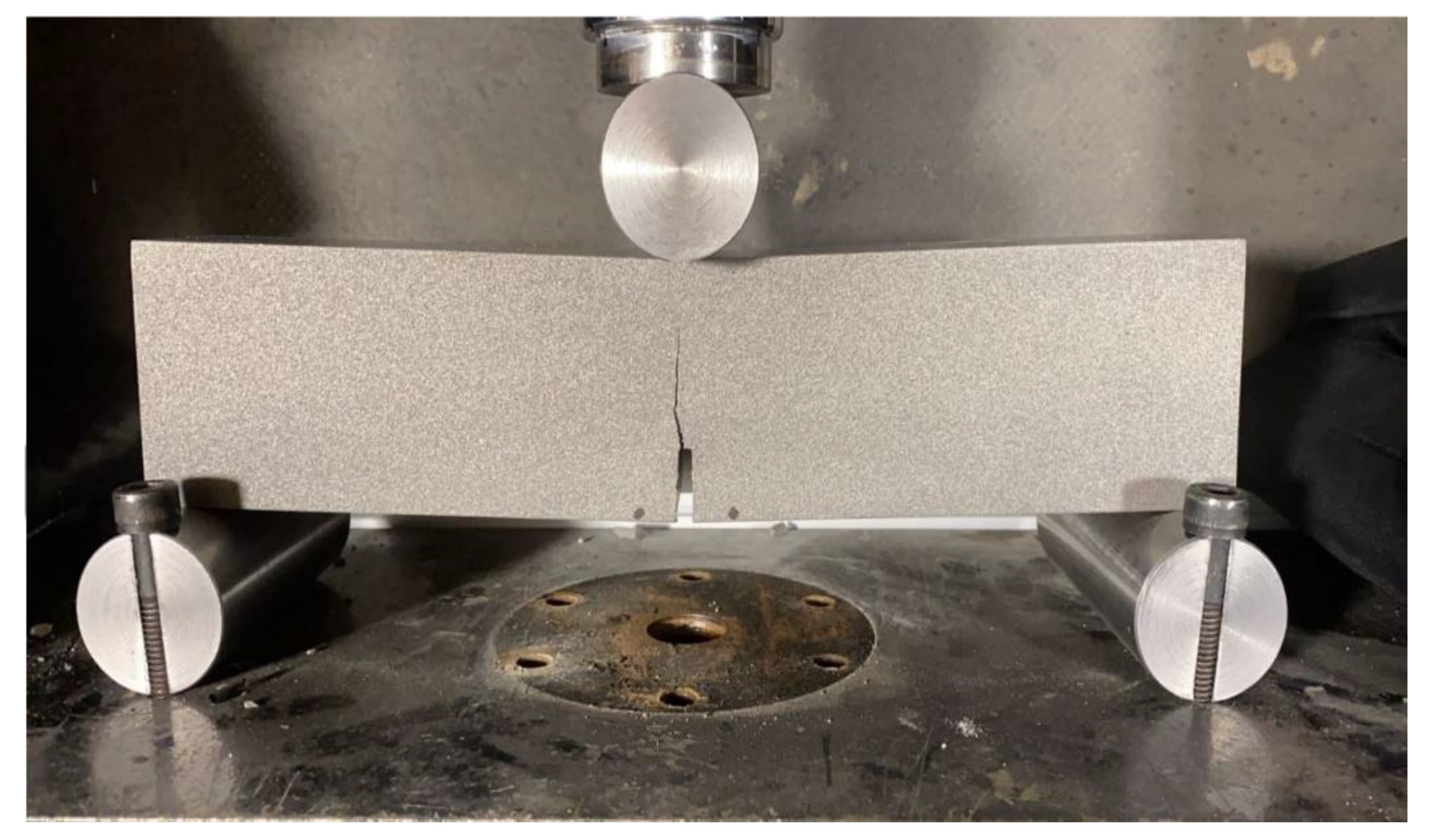
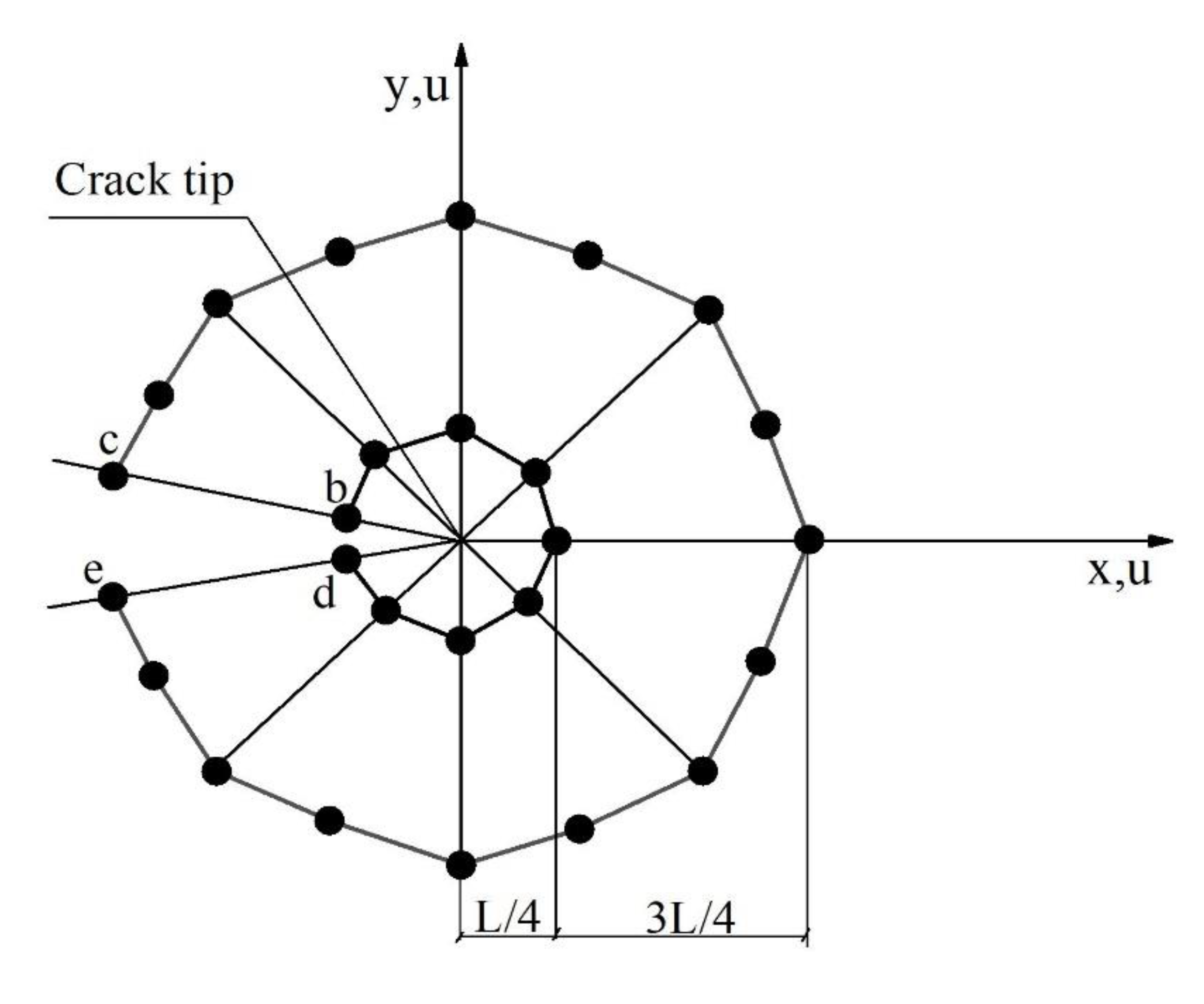
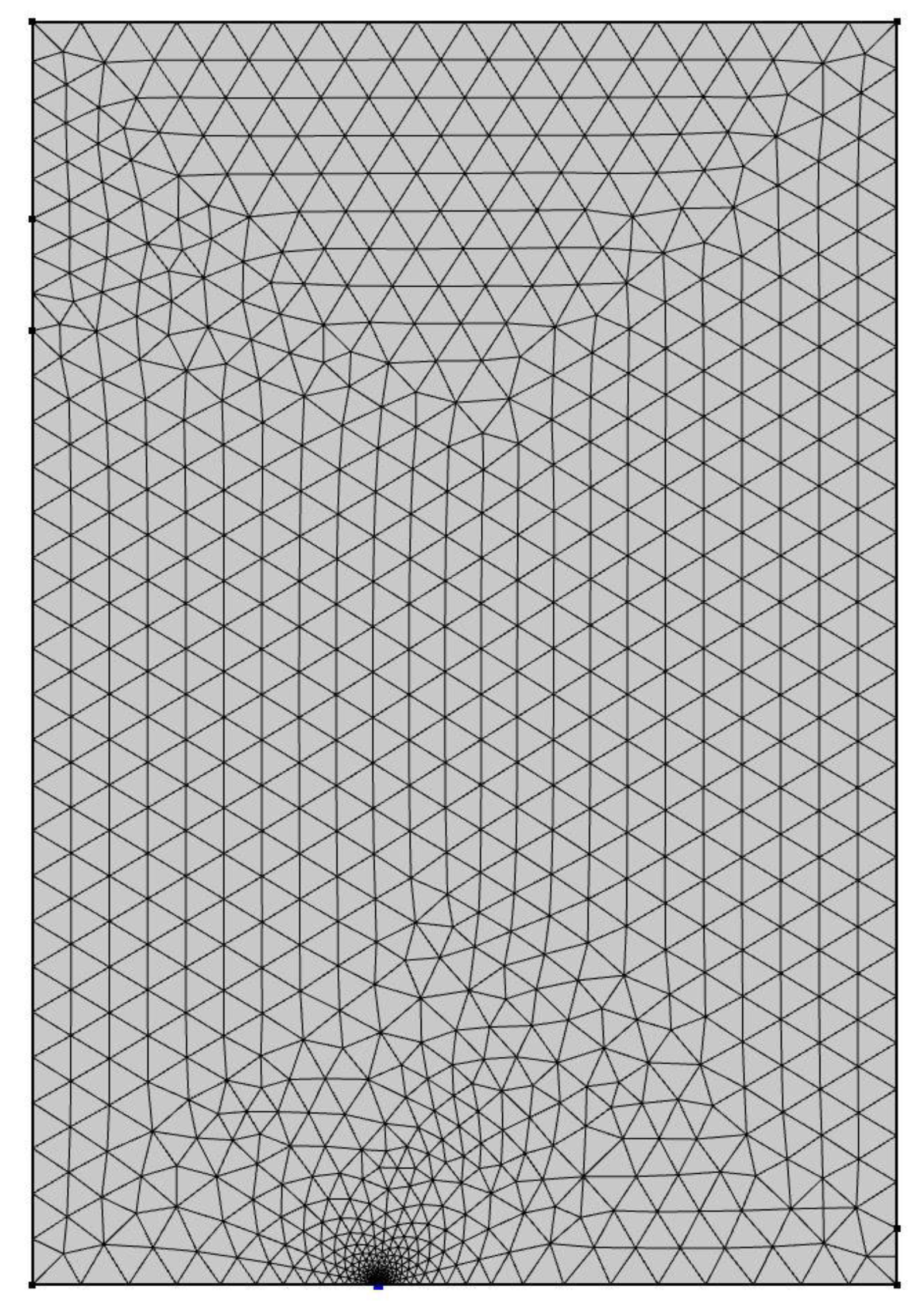
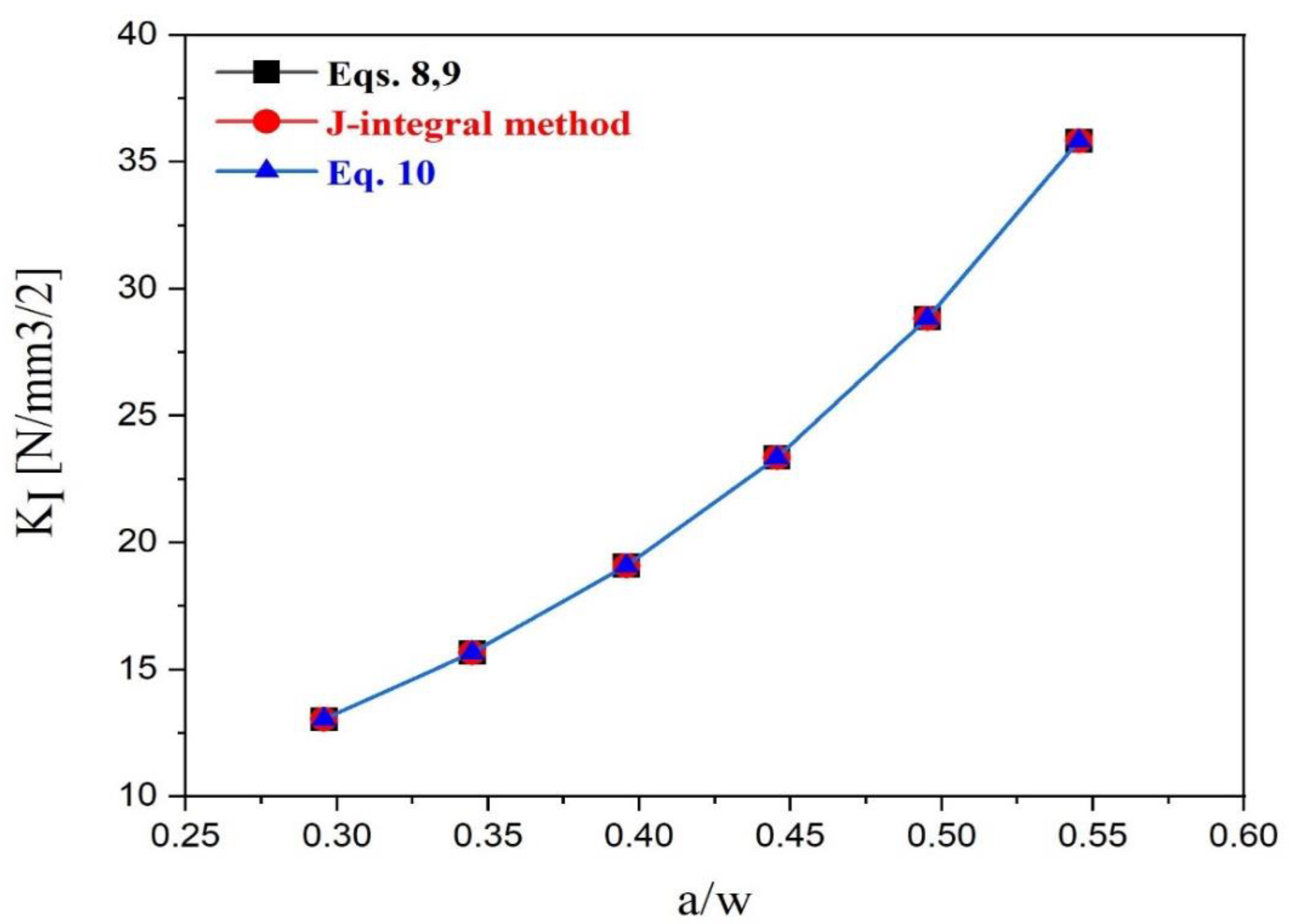



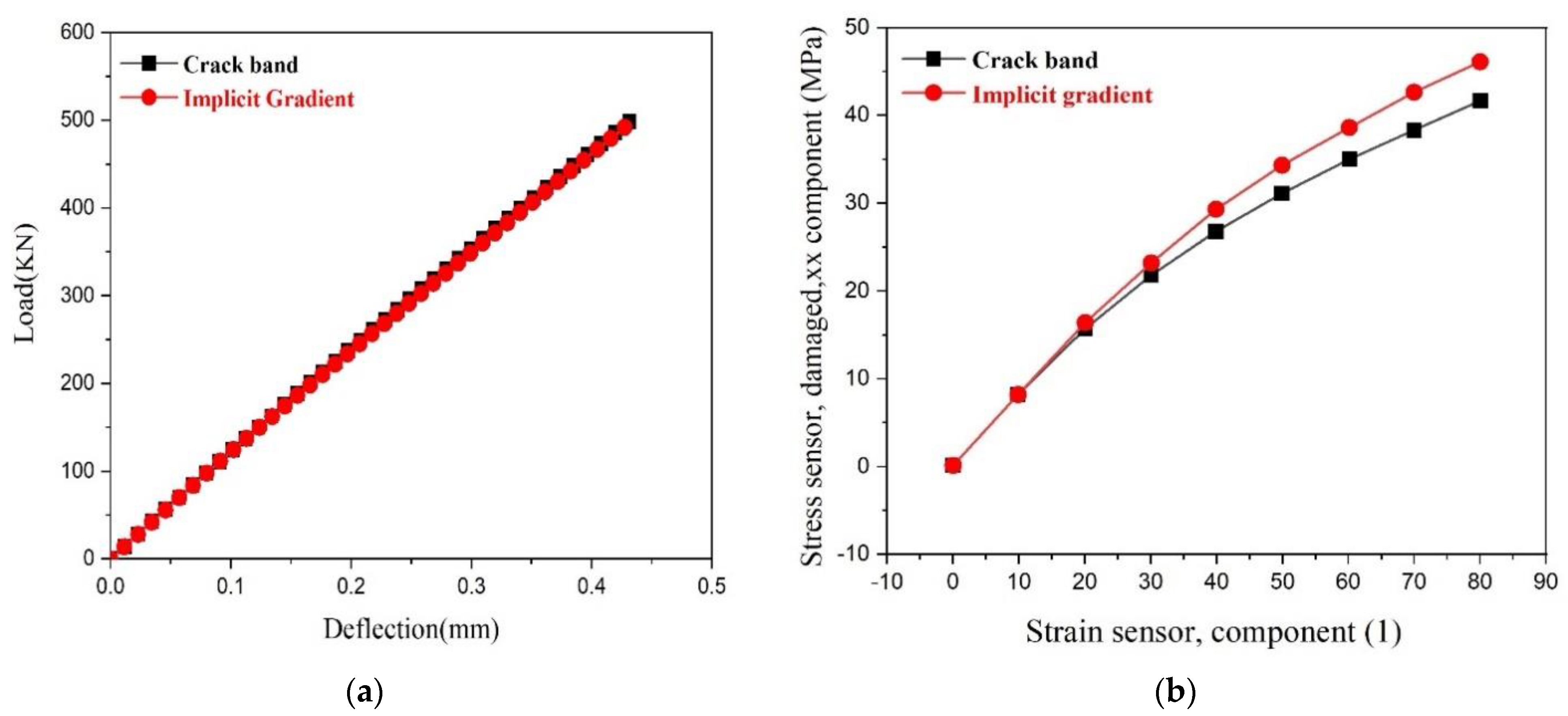
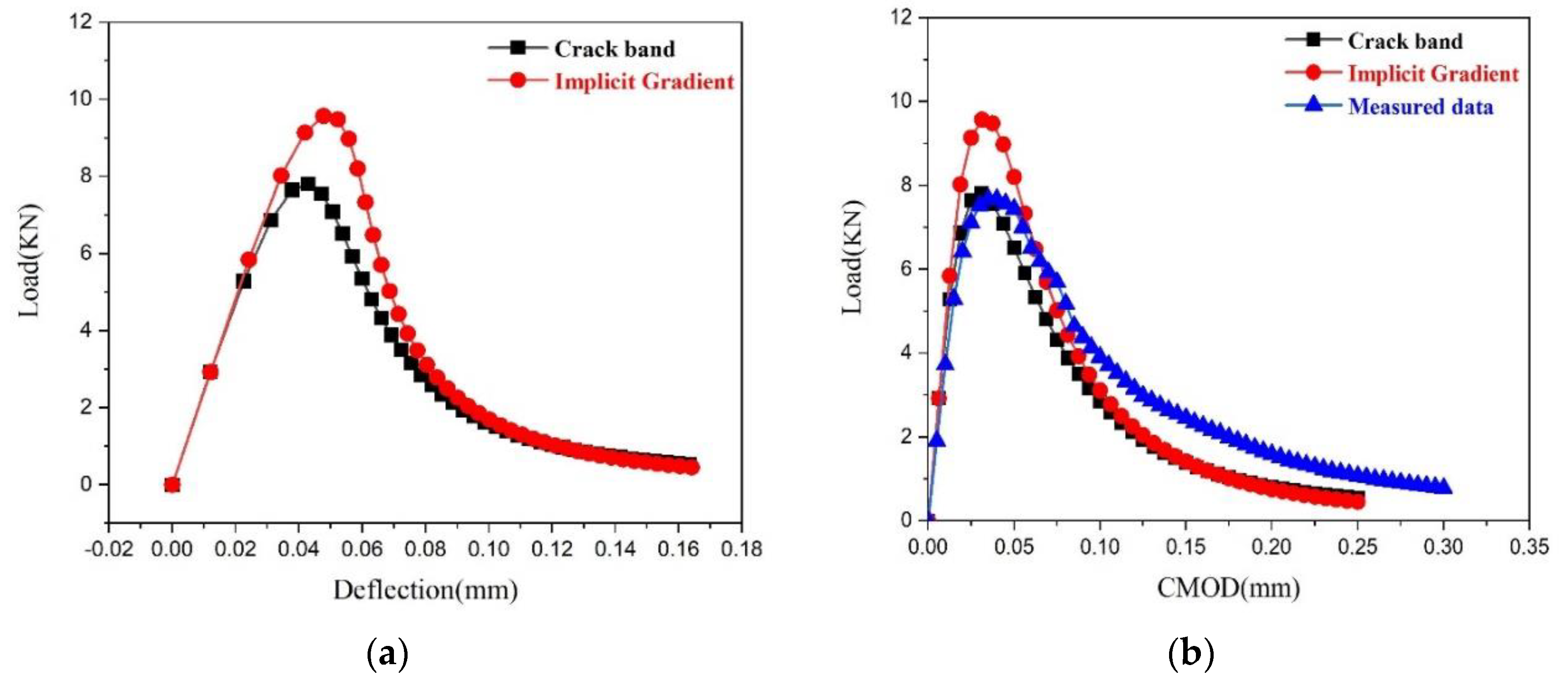
Disclaimer/Publisher’s Note: The statements, opinions and data contained in all publications are solely those of the individual author(s) and contributor(s) and not of MDPI and/or the editor(s). MDPI and/or the editor(s) disclaim responsibility for any injury to people or property resulting from any ideas, methods, instructions or products referred to in the content. |
© 2023 by the authors. Licensee MDPI, Basel, Switzerland. This article is an open access article distributed under the terms and conditions of the Creative Commons Attribution (CC BY) license (https://creativecommons.org/licenses/by/4.0/).
Share and Cite
Al-Abboodi, H.; Fan, H.; Al-Bahrani, M. Prediction of Crack Propagation of Nano-Crystalline Coating Material Prepared from (SAM2X5): Experimentally and Numerically. Crystals 2023, 13, 365. https://doi.org/10.3390/cryst13020365
Al-Abboodi H, Fan H, Al-Bahrani M. Prediction of Crack Propagation of Nano-Crystalline Coating Material Prepared from (SAM2X5): Experimentally and Numerically. Crystals. 2023; 13(2):365. https://doi.org/10.3390/cryst13020365
Chicago/Turabian StyleAl-Abboodi, Hamid, Huiqing Fan, and Mohammed Al-Bahrani. 2023. "Prediction of Crack Propagation of Nano-Crystalline Coating Material Prepared from (SAM2X5): Experimentally and Numerically" Crystals 13, no. 2: 365. https://doi.org/10.3390/cryst13020365




